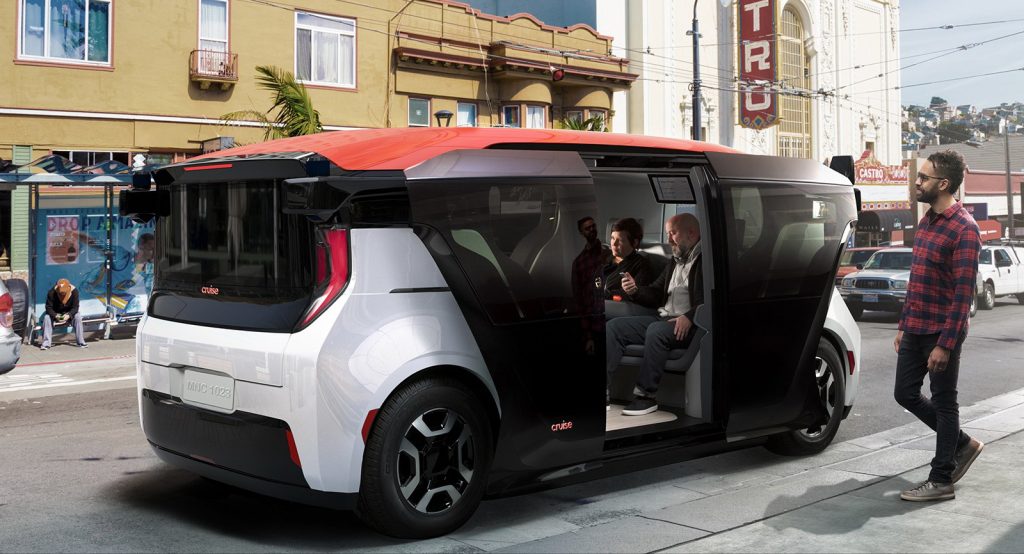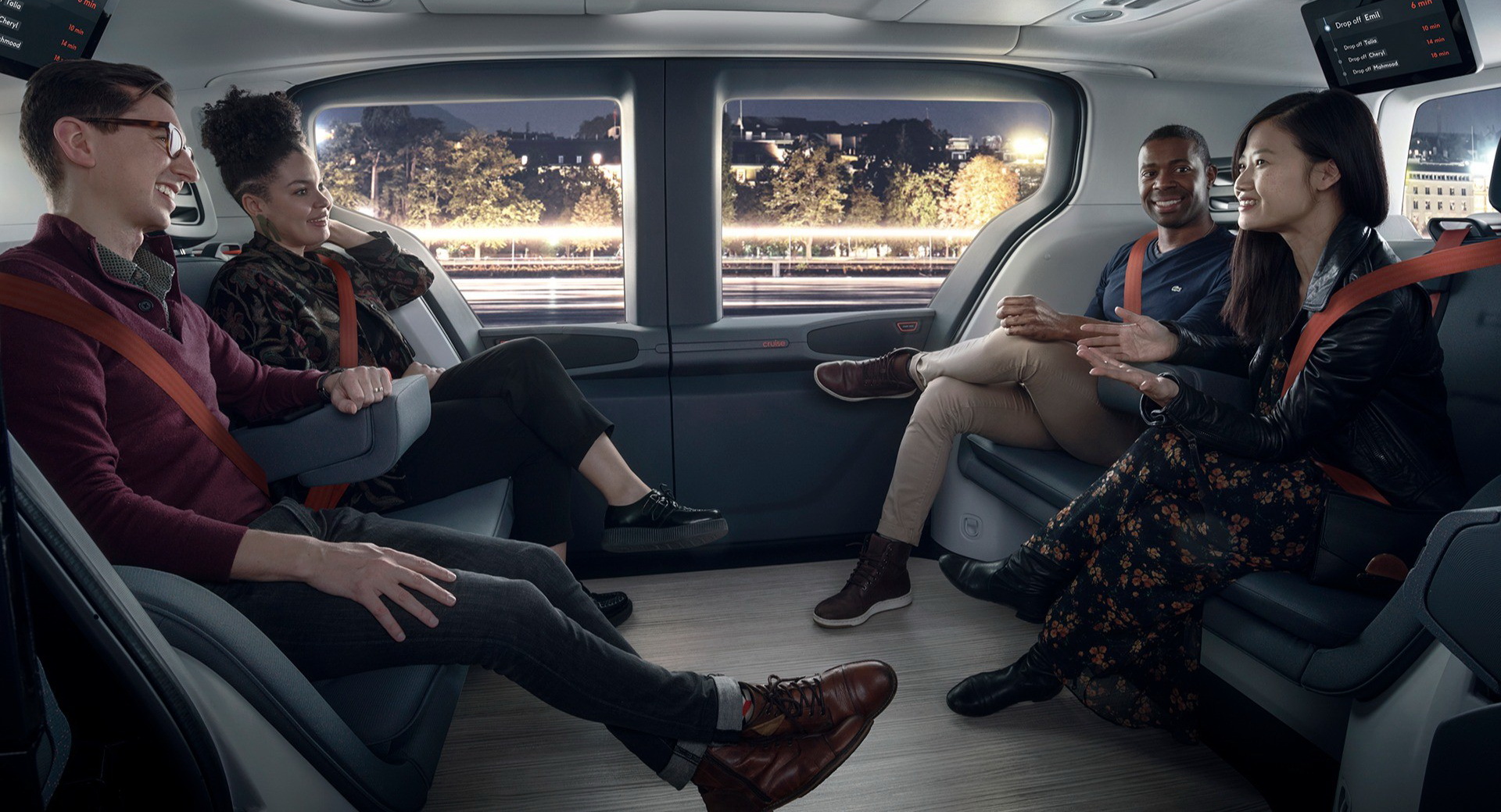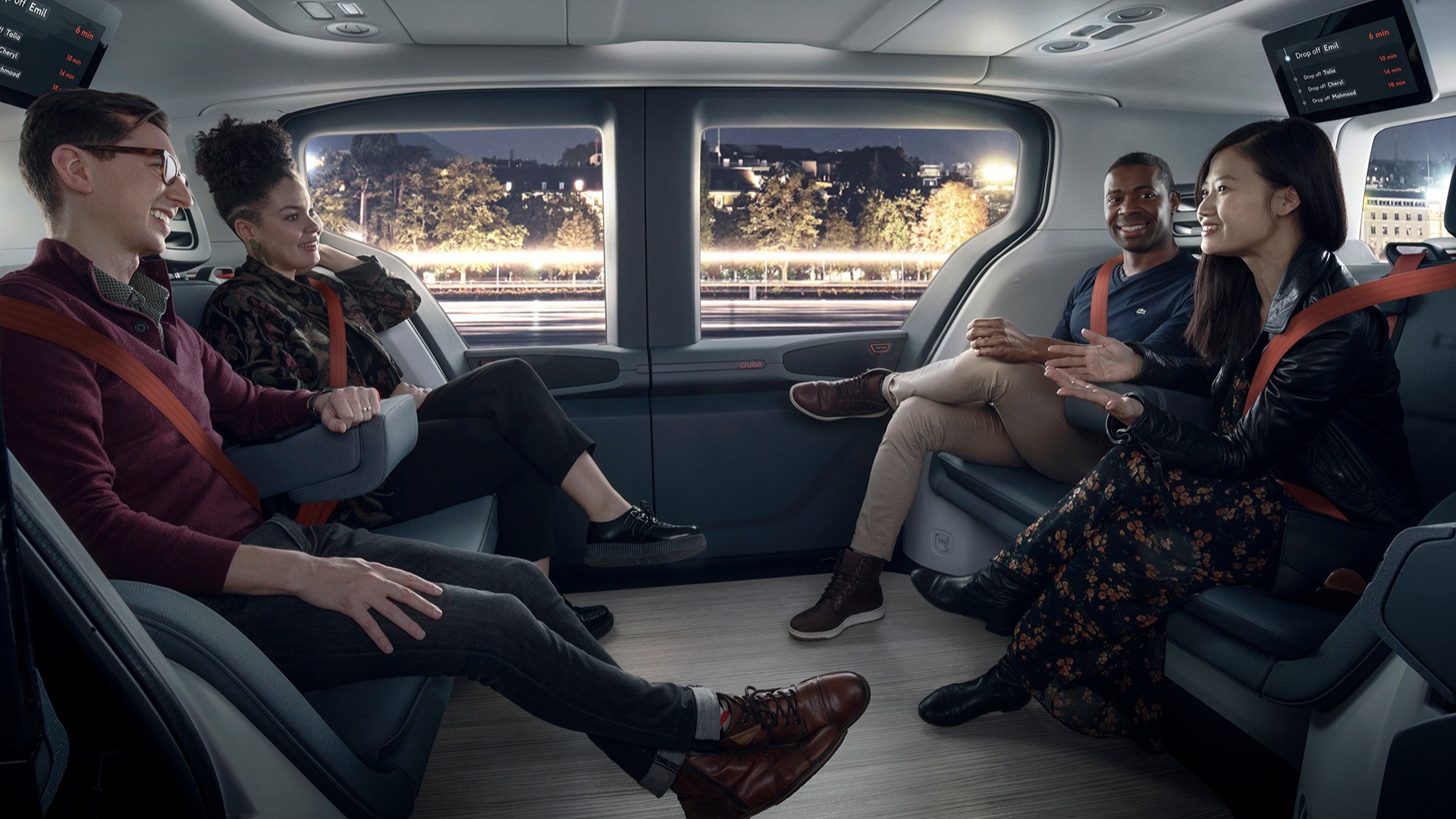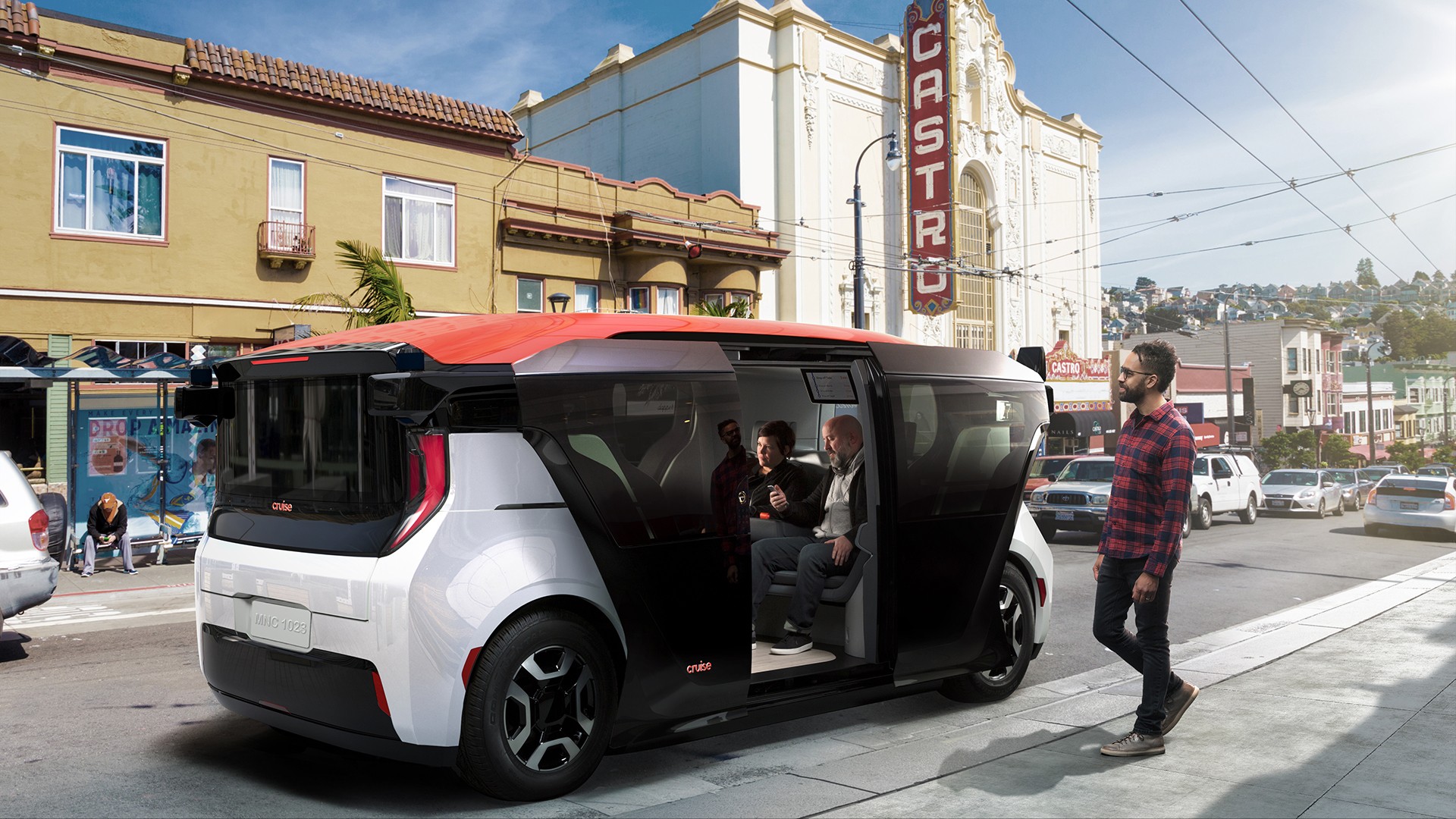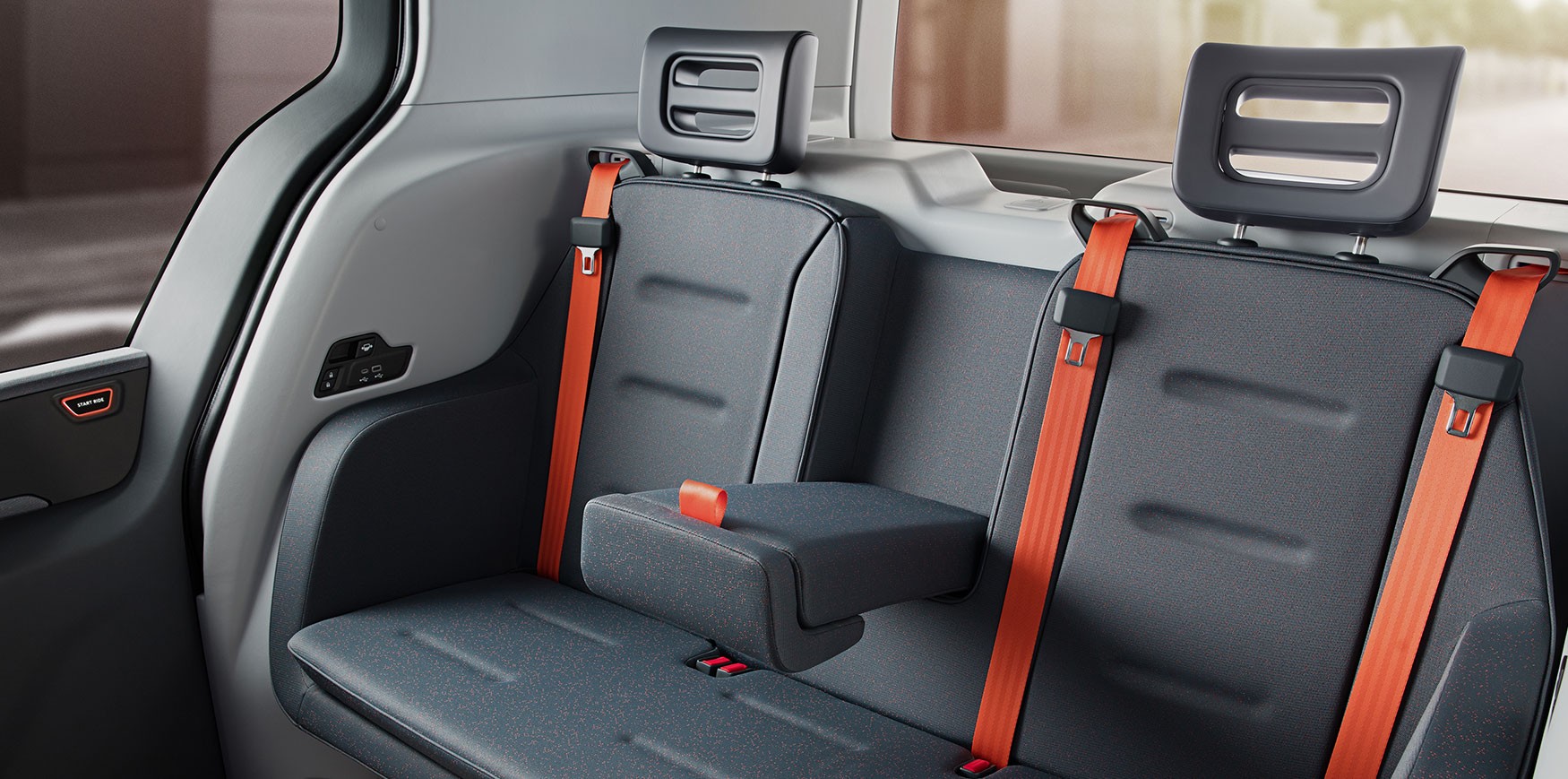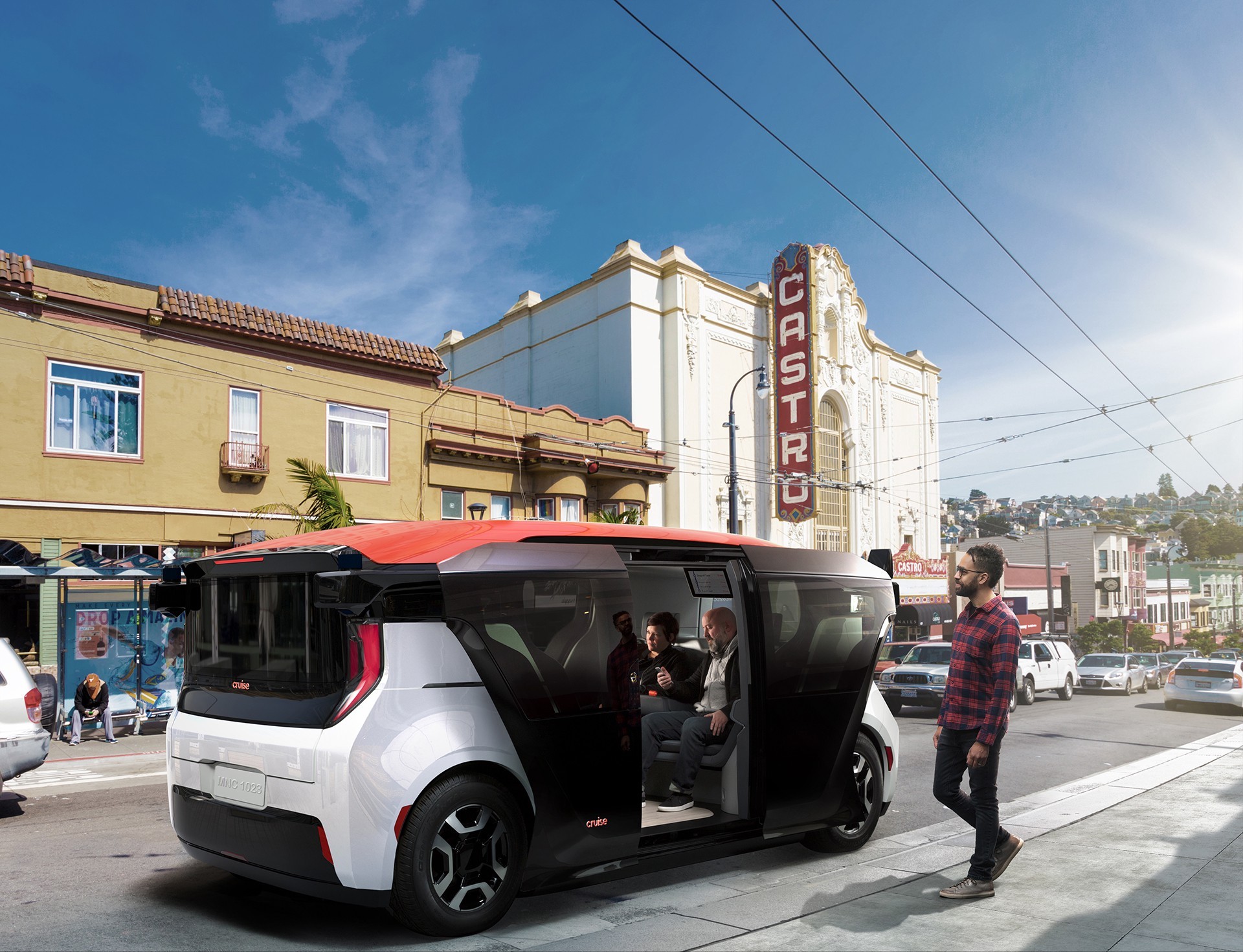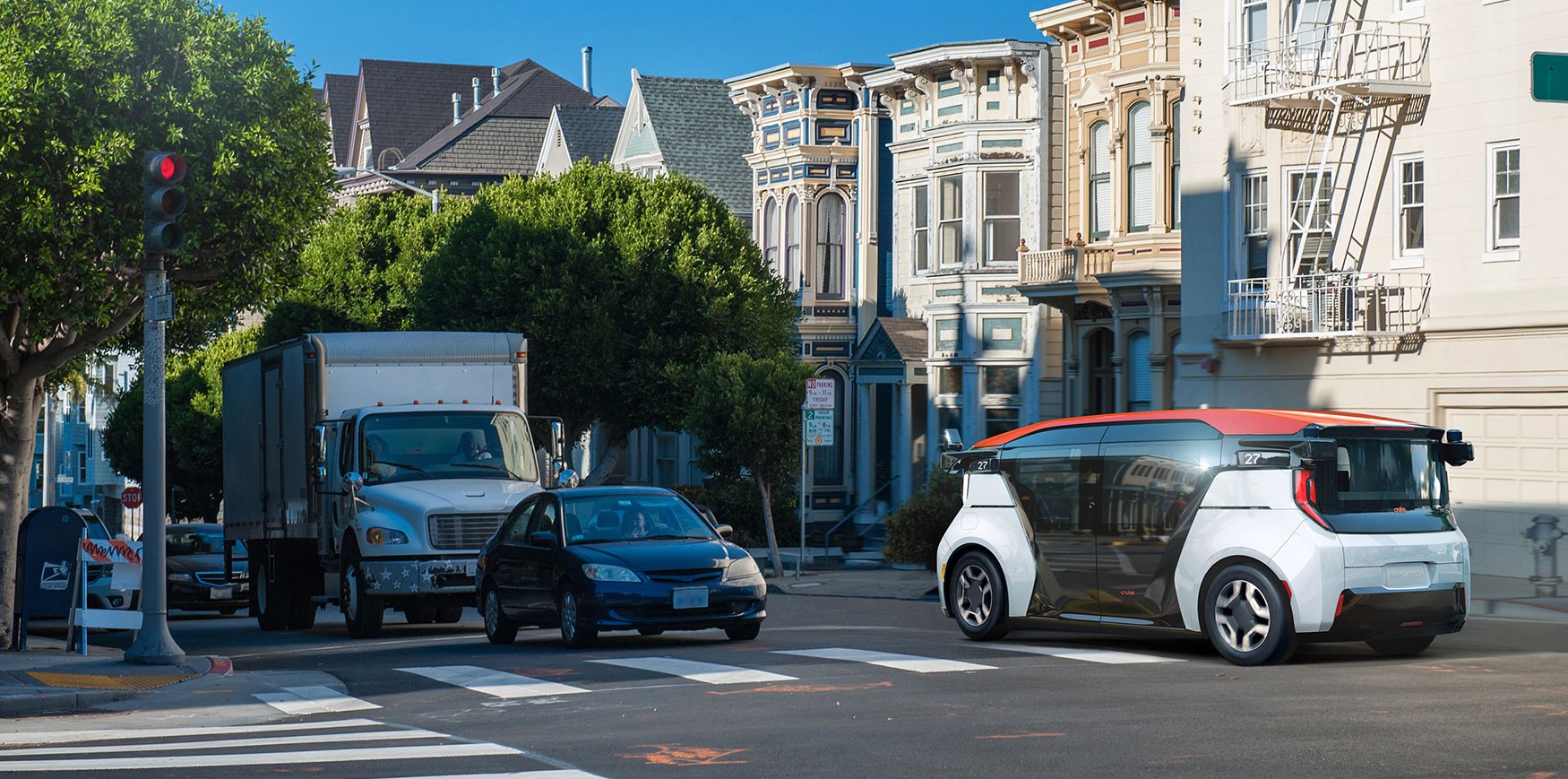Self-driving carmaker Cruise, together with its majority shareholder GM, are seeking U.S. regulatory approval in order to unleash a limited number of Cruise Origin vehicles onto the streets.
The Cruise Origin, unveiled in January, is more of a passenger pod, since it doesn’t have a steering wheel or pedals. It boasts two bench seats that face each other and is therefore able to accommodate four passengers.
GM plans to start building the Origin in Detroit in late 2021 or early 2022.
Meanwhile, Cruise is also withdrawing an exemption petition filed with the NHTSA in January of 2018, which seeked approval for a limited number of autonomous models based on the Chevrolet Bolt platform. The NHTSA said that it will “review the new petition when it is received,” reports Reuters.
Related: The Cruise Origin Is The Electric, Autonomous, Shareable Car Of The Future
Cruise has already received a permit from the California DMV last week, becoming the first company allowed to test cars without safety drivers in San Francisco. Currently, carmakers can only seek two-year exemptions for up to 2,500 vehicles that don’t meet existing federal rules.
Of course, these exemptions were written decades ago, by people who always assumed that human drivers would remain in full control of a vehicle. Recently though, the NHTSA has been considering revising certain automotive safety regulations in order to remove “unnecessary regulatory barriers to the safe introduction of automated driving systems.”
Cruise expects the Origin to have a lifespan of over 1,000,000 miles (1,609,344 km), which is six times longer than the average vehicle. The Origin will only be available as a ride-sharing tool, capable of saving people money in the long run.
In fact, the company says that the “average San Franciscan household driving themselves or using ride-sharing, will, on average, see up to $5,000 back in their pocket every year,” by using the Origin.



